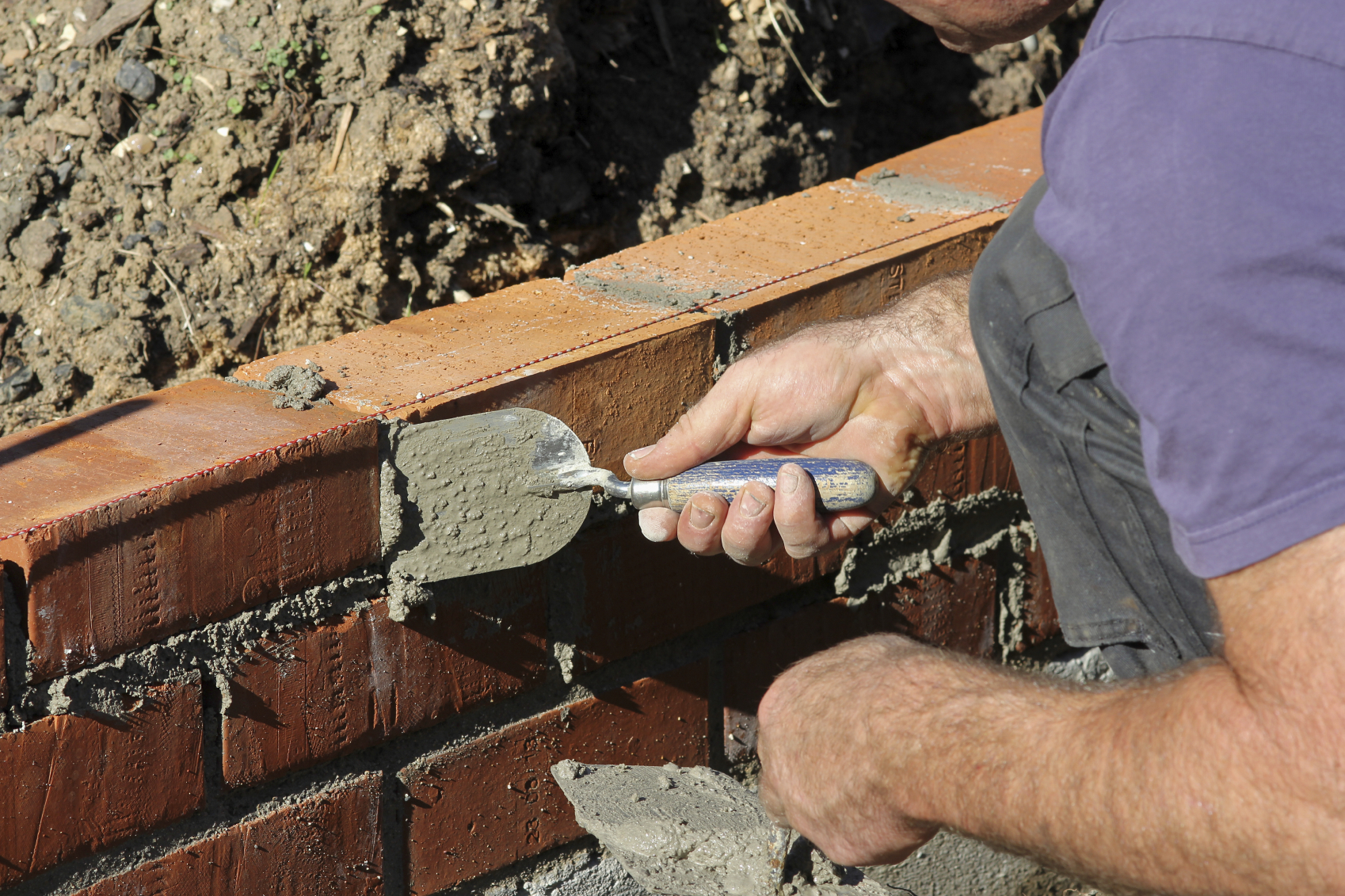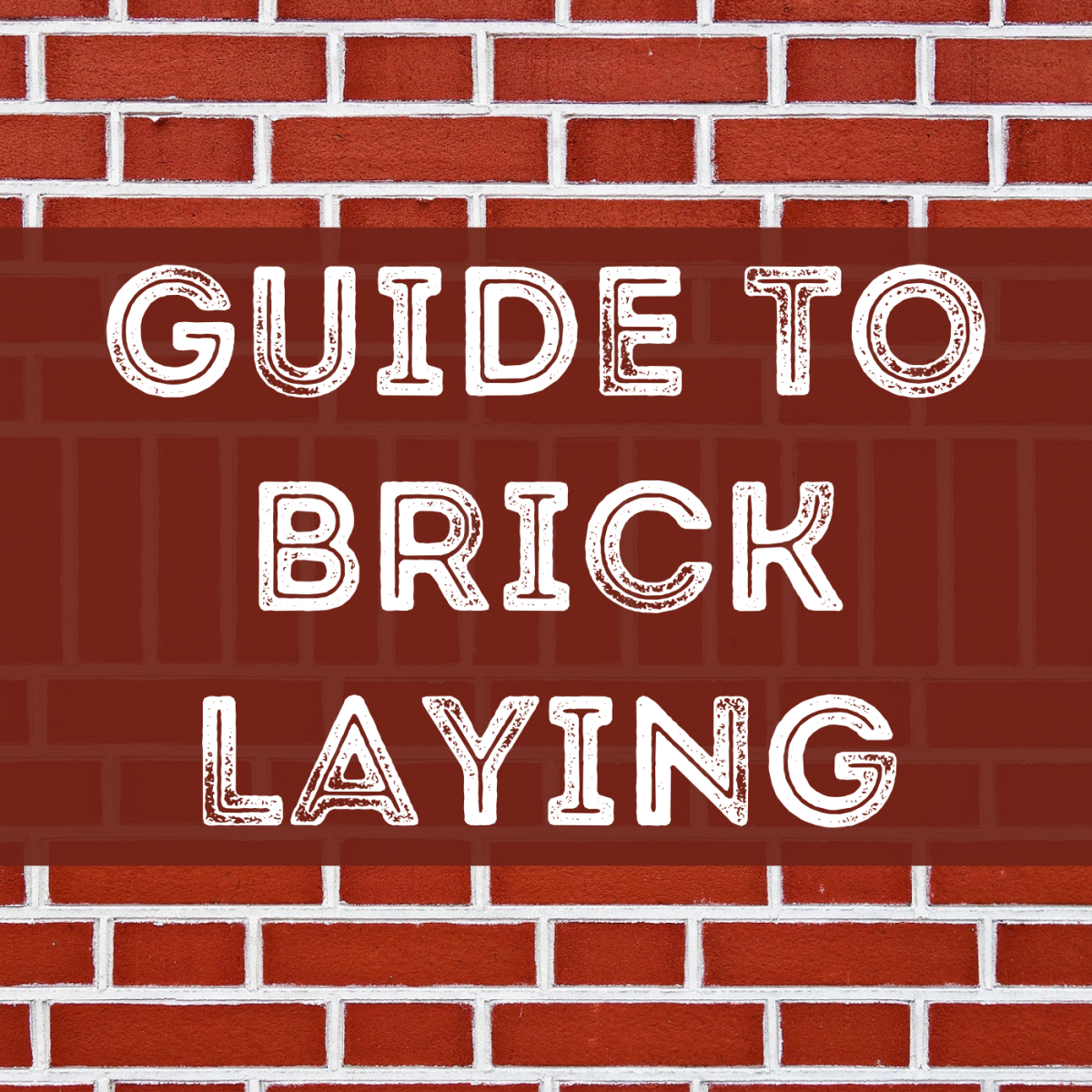The Definitive Guide to Bricklayer Auckland
Wiki Article
Some Known Details About Bricklayer Auckland
Table of ContentsBricklayer Auckland Can Be Fun For AnyoneExamine This Report about Bricklayer AucklandThe Only Guide for Bricklayer AucklandFascination About Bricklayer AucklandThe 10-Second Trick For Bricklayer AucklandThe Best Strategy To Use For Bricklayer Auckland
The scaffolding required have to be intended prior to the work begins. It must be constructed in such away regarding trigger the least disturbance with other team participants. Bricks need to constantly be stacked on planks; never ever load them directly on irregular or soft ground. Do not save bricks on scaffolds or paths.Except where stacked in sheds, block piles need to never ever be more than 7 feet high. When a pile of brick reaches an elevation of 4 feet, it needs to be tapered back 1 inch in every foot of elevation over the 4-foot level. The tops of block stacks have to be kept degree, and the taper have to be preserved throughout unpiling procedures.
Structural bond refers to just how the individual masonry units interlock or tie together right into a solitary architectural system. You can achieve structural bonding of brick and ceramic tile walls in among the complying with three ways: Overlapping (interlocking) the stonework systems. Installing metal incorporate connecting joints. Using cement to adhere surrounding wythes of masonry.
All About Bricklayer Auckland
Pattern bond describes the pattern created by the stonework systems and mortar joints on the face of a wall surface (Bricklayer Auckland). The pattern may result from the structural bond, or it might be simply ornamental as well as unrelated to the structural bond. Figure 4-4 reveals the six standard pattern bonds alike usage today.The running bond is the simplest of the six patterns, being composed of all cots. Since the bond has no headers, steel ties typically develop the structural bond. The running bond is utilized mostly in tooth cavity wall building and construction, block veneer walls, and facing tile wall surfaces made with extra large cot ceramic tile.
Excellent bricks must not degenerate when put in water. Just when fat lime or clay mortar is used or when one is required to make use of blocks that are not well burnt, this saturating guideline has actually to be kicked back.
Little Known Facts About Bricklayer Auckland.
In all cases, bricks ought to not be taken care of in baskets or in any kind of various other mode which will destroy the sharpness of their edges. How do you construct a stonework wall? The procedure of bricklaying in common general job is as follows. A layer of mortar is spread to cover the full width of the wall for a suitable length of the lower training course.
Ultimately, we press the side protruding mortar in securely to be level with the face of the wall if it is to be left unplastered. In the common method adopted by several masons, a row of blocks is very first put on a thin layer of bed mortar leaving the cross joints empty.


Purely this is not a good method. (Nevertheless, when using concrete mortar of high stamina, the loss of strength due to violation of these regulations may be just low.)The wall surfaces are increased really plumb. All training courses are laid genuinely horizontal and also all upright anonymous joints truly upright. Upright joints in alternative programs should come directly, one over the various other.
Not known Facts About Bricklayer Auckland
For this objective, a wooden straight side with graduation providing a thickness of each brick course consisting of joint can be utilized for advice. For a thick wall surface, the above operation is duplicated together with both faces of the wall and also the indoor loading bricks for the thick wall check this surface are laid in a similar manner.
This operation of filling up open joints is termed flushing-up. It is incorrectly left out for a number of courses on some badly-executed jobs and also only done later on (not after every course) in an inefficient manner. It is not a good method as well as should be prevented as it is important that every program must be purged up to the degree if great is required.

Bricklayer Auckland for Dummies
The mortar climbing and loading the vertical joints totally and forms an extremely solid and strong wall. This is referred to as larrying. For a rat catch bond job (as in the building and construction of cavity walls), if the mortar is positioned carelessly on the block, several of it will certainly fall right into the dental caries you could try these out as well as will certainly be lost.The face of the brickwork shall also be cleaned of all mortar droppings, etc(ii) When conditions render it necessary to continue a portion of a building in uneven training courses, the work will be built back (according to the bond used on the work) at an angle not steeper than 45 levels so as to ensure an attire and also efficient bonding.
Otherwise, for faces to be plastered, ending up of the face joints need to be accomplished as gone over in below (This is very important.)(iv) The walls should be evenly increased all around not leaving any type of part one metre (3 feet) less than the other - Bricklayer Auckland. A day's work should not be even more than 1.
The Best Guide To Bricklayer Auckland
When the facework is to be later plastered or the joints alone are to be sharp, the joints have to be raked while the wall is being constructed. Bricklayer Auckland. It ought to be raked to a minimum deepness of 12 mm by a raking device throughout the progression of the work itself, when the mortar is still eco-friendly.
If gluing or pointing is not envisaged, the joints must be struck flush as well as finished at the time of laying itself, as already mentioned. Half-brick walls tend to fracture unless care is absorbed its building. Brickwork in half-brick masonry is to be brought out with cots in 1: 5 mortar.
Report this wiki page